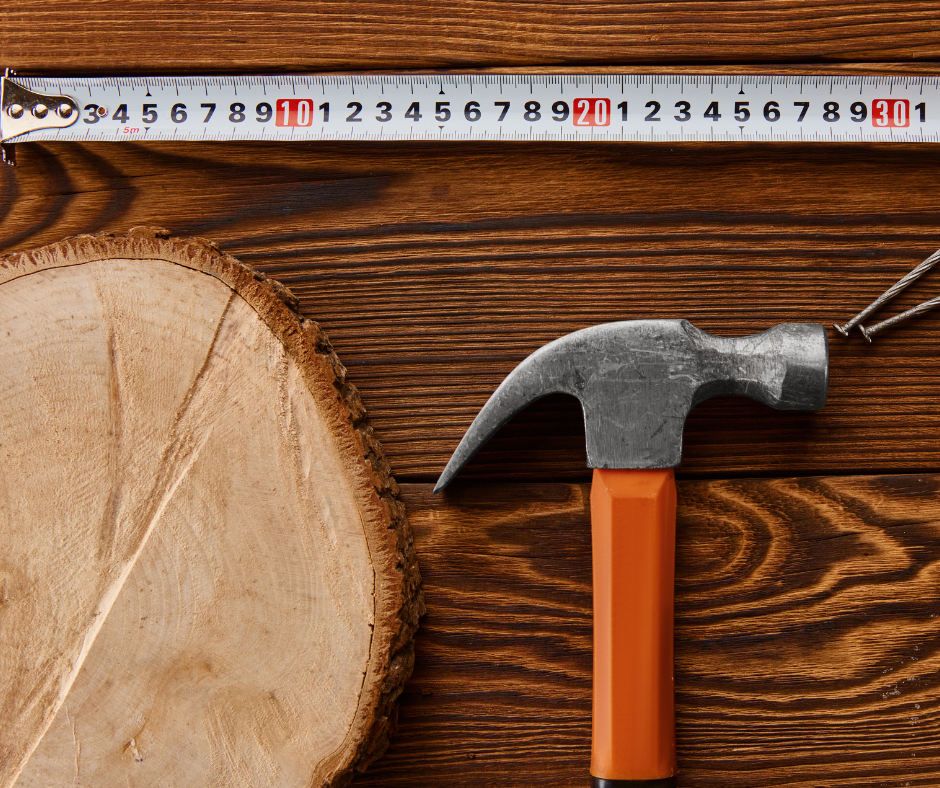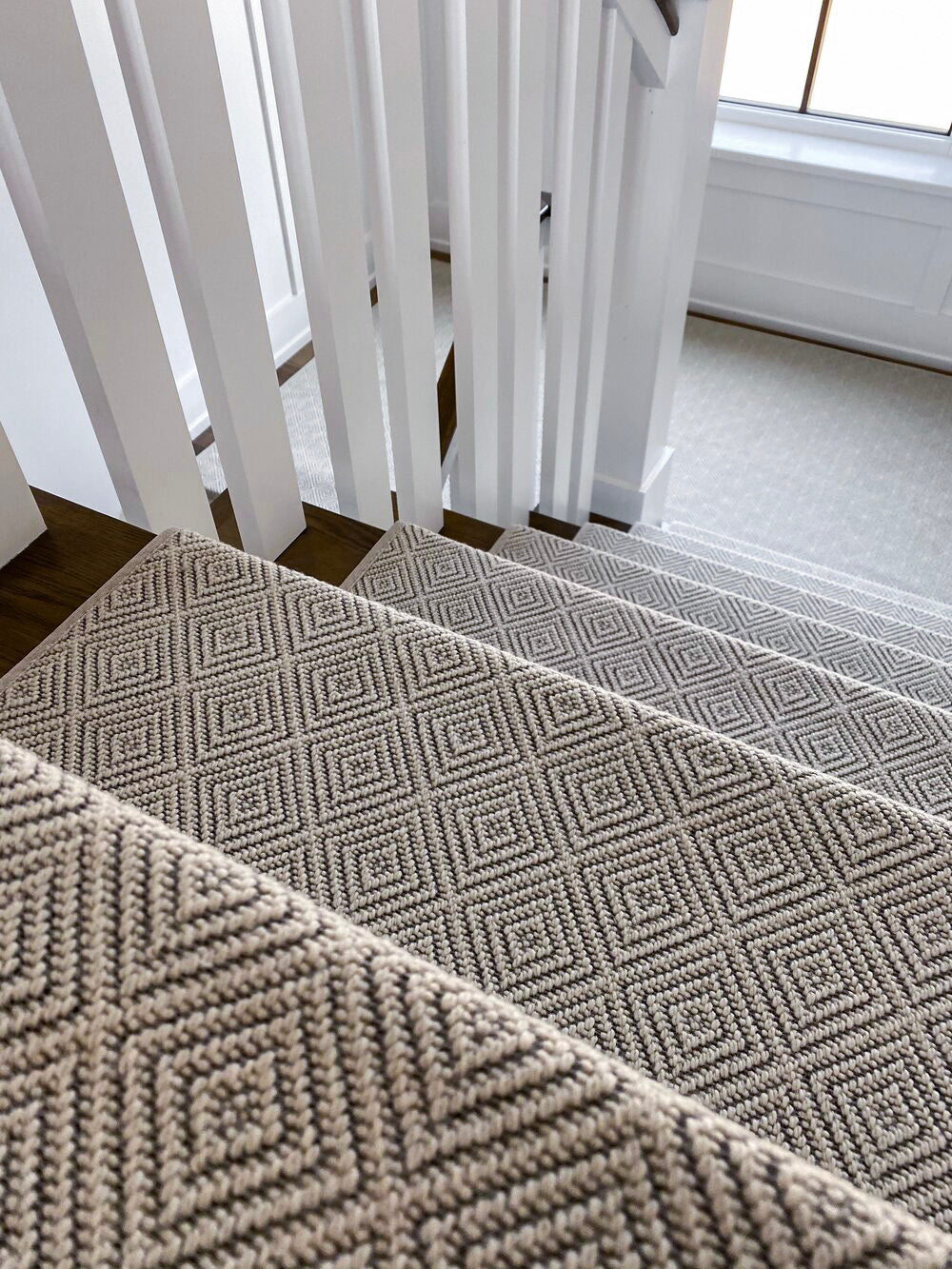Your staircase doesn’t have to stay bland or worn out when there are simple upgrades that transform the entire look. Adding the right materials can boost safety, style, and long-term durability all at once. A metal stair riser is the vertical piece between each step that supports the tread and creates a sleek, modern appearance in your staircase.
When paired with carpet stair treads, metal risers offer both comfort underfoot and a durable foundation that stands up to daily wear. In this guide, you’ll learn how to measure and install metal risers, understand essential building codes, and discover design ideas to pair them with handrails and balusters. Keep reading to find everything you need to upgrade your stairs confidently and create a space you’ll love.
What Is the Rule for Stair Risers?
When you’re planning a stair upgrade, getting the measurements right is key. Not only does the right riser height keep your stairs feeling comfortable—it also keeps your home safer for kids, older adults, and guests.
Here are the most important guidelines to follow:
Height and Depth
-
Height: Each riser should be between 7 and 8 inches high, which aligns with the International Residential Code (IRC R311.7.5.1) requiring a maximum riser height of 7.75 inches. This range is comfortable for most people and meets building codes across the U.S.
-
Depth: The depth, also called tread depth, should be at least 10 inches, as recommended by the IRC R311.7.5.2, which sets a minimum tread depth of 10 inches for safety. This gives your foot plenty of space to land securely with each step.
Consistency
-
Uniformity: Every riser on your staircase should be the same height. If risers are different heights, it can cause missteps and increase the risk of trips and falls.
A metal stair riser makes it easier to keep your measurements consistent since metal panels can be precision-cut to the exact height and width you need.
What’s the Difference Between a Stringer and a Riser?
Many homeowners mix up these two parts of a staircase. Here’s a simple way to remember:
-
Stringers: These are the angled boards running along the sides of your staircase. They support the treads (the part you step on) and the risers. Without stringers, your stairs wouldn’t have any framework to hold everything together.
-
Risers: These are the vertical pieces that fill the space between each tread. Metal risers give each step height and support, and they also create a polished look by covering gaps between treads.
When you install new metal stair risers, you attach them to the stringers and treads.
What Is the Most Comfortable Stair Riser Height?
For most homes, the ideal riser height is between 7 and 7.5 inches, following International Residential Code (IRC) guidelines, which set the maximum riser height at 7.75 inches (IRC R311.7.5.1). This range feels natural for most people and helps prevent strain on your knees and legs as you go up and down.
If your family has small children or older adults, you might want to adjust the height closer to 7 inches to make each step easier to navigate. A lower riser height can improve comfort and help prevent trips or falls.
When in doubt, consult your local building codes—like the IRC or the International Building Code (IBC Section 1011.5.2)—or talk to a professional installer to confirm the right measurement for your specific space.
How to Install Metal Stair Risers if You Have Carpet Stair Treads
You might think metal risers can’t work with carpet stair treads, but the truth is, they pair beautifully when installed correctly.
Here’s a step-by-step guide to help you do it yourself:
Preparation
-
Remove Carpeting: Gently pull up the carpet from each stair where you’ll add the new risers. If you want to reuse the carpet, set it aside carefully.
-
Clean the Surface: Wipe down each step to remove dust, old adhesive, and debris.
Installation Steps
-
Measure and Cut: Use a tape measure to get the exact height and width of each stair. Mark your measurements on the metal riser panels. Cut them to size with a metal saw or power tool rated for metal cutting.
-
Attach Risers: Align the metal riser with the stringer and tread. Secure it using screws designed for metal installation. Be sure to double-check alignment as you go to keep everything even.
-
Reattach Carpet: If you saved your carpet stair treads, trim them to fit the new riser profile and secure them with adhesive or carpet tacks.
Tips for Success
-
Double-Check Measurements: Even small errors can lead to uneven steps.
-
Use Quality Tools: The right saw and fasteners make installation smoother.
-
Secure Firmly: Make sure every riser is fastened tight to prevent movement or squeaks later.
Enhancing Your Stairs with Unique Handrails and Balusters
Pairing metal stair risers with stylish handrails and balusters can create a staircase that feels both fresh and timeless.
Unique Stair Handrails
Handrails are more than just safety features—they’re an opportunity to show off your personal style. Here are a few ideas:
-
Wood Handrails: Add warmth and contrast against sleek metal risers.
-
Glass Panels: Create an airy, open look that showcases every detail of your stairs.
-
Modern Metal Designs: Pair your risers with minimalist metal railings for a clean, contemporary aesthetic.
Stair Handrail Balusters
Balusters are the vertical supports connecting your handrail to the treads. Choosing the right baluster style completes the look:
-
Wrought Iron: Classic and durable, perfect for traditional or rustic homes.
-
Modern Metal: Sleek lines that echo the look of your risers.
-
Wooden Balusters: For a softer, transitional feel that works in many spaces.
No matter which combination you choose, pairing metal stair risers with unique stair handrails and balusters makes your stairs a true statement piece.
Benefits of Metal Stair Risers
Still deciding if metal is right for you? Here are some compelling reasons to consider this upgrade:
-
Durability: Metal risers stand up to years of heavy foot traffic without warping, cracking, or wearing down.
-
Style: They instantly create a modern, clean look that elevates your entire space.
-
Easy Maintenance: Metal is easy to wipe clean, making it ideal for busy families and high-traffic areas.
-
Moisture Resistance: Unlike wood, metal doesn’t absorb water, which helps prevent rot and mold.
-
Versatility: You can combine metal risers with nearly any other material—from wood treads to glass handrails—for a custom design.
Steps to Success
Ready to upgrade your staircase with beautiful, long-lasting metal stair risers? Our team is here to guide you through every step, from choosing the right materials to ensuring a perfect fit. With just a few simple changes, you can create a staircase that feels fresh, modern, and safe for everyone in your home.
We’re passionate about helping families design spaces they love and feel proud of every day. Whether you’re planning a big renovation or a simple weekend project, Oak Valley Designs has everything you need to get started with confidence. Reach out today and let us help you bring your vision to life.
Your Staircase, Reimagined
Let Oak Valley Designs help you create a staircase that feels custom, comfortable, and uniquely yours. From durable risers to beautiful handrails and balusters, we’ll guide you every step of the way.
Get started today—our friendly team is ready to help you design a space you’ll love.
-
Website: https://oakvalleydesigns.com/
-
Phone: (706) 331-0315
-
Email: info@oakvalleydesigns.com
-
Address: 30 River Ct SW Bldg E Cartersville, GA 30120




